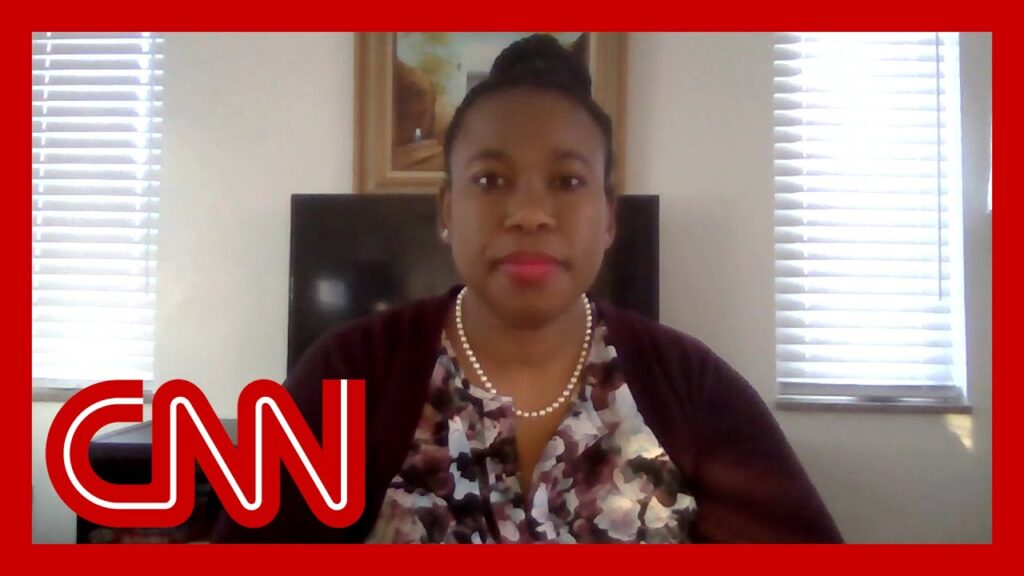We’ve talked here before about the health care disparities that minority adults have come to expect in this country. Well, now there’s a new report that children of all minority groups also face disparities in care. In a review of studies done over a five year period, researchers found that overall, the literature reveals
Widespread patterns of inequitable treatment across pediatric specialties. Those include specialties, everything from neonatal care to end of life care. Joining me now to talk about her findings is Dr. Nia Hurd Garrett. She’s a pediatrician and researcher who oversaw the review. Thank you so much for being with us from from neonatal care,
From the beginning of life to the end of life and across all specialties. What did you find? Yes. From the very first moments of life, all the way to the last moments of life for children, we’re seeing disparities in almost every aspect of pediatric care. And as a pediatrician
And as a mom, it’s pretty disheartening. But every almost every single specialty we have, we found disparities. And the one that shows one of the greater disparities is in pain management. If a kid breaks his arm tumbling or sprains an ankle, why roller skating? Children of color
Are less likely to get those painkillers. Explain the disparity here. Absolutely. There’s been so much research, especially in the emergency room department, about pain management in minorities, youth. So black and Hispanic youth are less likely to get the pain medicine that they need despite having a bone fracture, appendicitis, migraine
And even those that are getting a finger or toe replaced are less likely to get pain medicine. And that is absolutely unacceptable. Is it clear why? So we think a lot of these disparities and and inequities that we see are driven by structural racism and implicit bias and other factors that are pervasive
Not only in our society, but also in our health care systems. We need to do more research to understand exactly why we’re seeing this. But one of the things we did in our study is taking out the the argument that it’s only insurance. The reason why people aren’t
Getting the care that they need is because they don’t have insurance. And that is not true for the study. We controlled for that. That means we made sure that all of these children had insurance and we’re still seeing these disparities. So they all had insurance. Are there economic levels
In which they are treated differently based on the communities in which they live or the income of their families? Absolutely. There there needs to be more work in this space because we know that even though children have insurance, all insurance is not created equal. So if you have public insurance
Or you have commercial insurance or private insurance, there are still levels within those insurances. So there is possibilities that even because even though you have insurance, doesn’t mean you’re going to get the top quality care. But even despite that, even looking at those that only had Medicaid insurance or only had private insurance,
Those disparities by race and ethnicity still persisted. So it didn’t really matter that you only had a certain type of insurance. What seem to really be the drivers here were race and ethnicity. And that is, again, a very unfortunate. And the pediatrician and a mom. It certainly is. And last for the moms
Who are watching and dads to what do they do with this? Well, how do they then advocate for care for their children? Absolutely. I think there needs to be a multi-level approach to this. I don’t want there to read this study and just leave
With a heavy heart and say, what do I do? You know, my kid needs care. I need help and then be scared to interact with the health care system. So there are things that I think parents and caregivers can do, advocating for their children. You know your child best and trying to push
For the care that they need. But it shouldn’t only be on the patient and family. Our health care systems need to review their policies and look at their data to make sure that we’re not exacerbating or making disparities inequities worse for kids and then for society. Policymakers and policy. Politicians can help
To make these inequities better by investing in communities and making sure there are good, solid systems for children and families. Dr. Nia Heard Garris, thank you for doing the work and thank you for the conversation.
source

